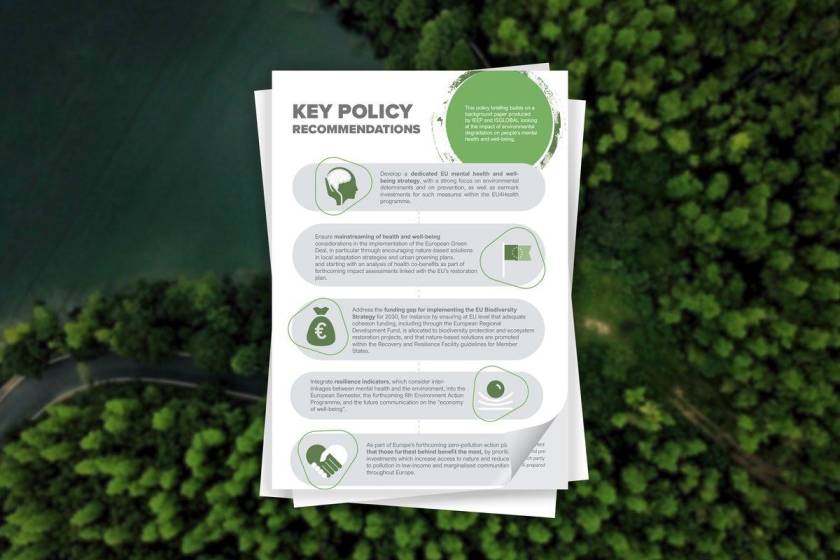
What is an Environmental Action Programme? A Complete Guide 2025
According to Demetris Papadakis, the 8th Environmental Action Programme intends to expand upon the European Green Deal and outline the course for EU environmental and climate policy action until 2030.
By laying out needs and long haul vision and objectives, the European Commission's proposition for the eighth Climate Activity Program (eighth EAP) tries to propel the European Green Arrangement, frame the course for EU natural and environment strategy activity through 2030, and direct ecological policymaking.
By trying to speed up the EU's shift to a perfect, roundabout economy that is asset proficient and environment unbiased in a fair and comprehensive way, the new 10-year program builds up the seventh EAP's 2050 vision while completely supporting the ecological and climatic objectives of the European Green Arrangement.
Read Also: European Pickup Trucks Market Share: Future Outlook
What is the Purpose of an Environmental Action Programme?

- An establishment for achieving the ecological objectives of the UN's Plan 2030 and its 17 Supportable Improvement Objectives ought to likewise be laid out by the eighth EAP.
- The Commission recommends a more strong execution, observing, and assessment system to achieve the six topical need targets of the Environmental Action Programme.
- One of the primary drives is the making of another observing system to check how well the EU and its part states are completing the program's objectives. This system depends on information, observing, and announcing abilities that are as of now set up.
- As the S&D Gathering's shadow rapporteur on this report, I accept that the proposition the way things are currently comes up short on all-encompassing desire and proactive measures expected to address ecological corruption and satisfy the EU's drawn out objective of "living great, inside the method for our planet."
- As another financial model for the EU, the eighth EAP proposition looks to present the at this point vague and unestablished thought of the "regenerative economy." This thought actually is by all accounts extremely distant from finding some kind of harmony between friendly, ecological, and monetary supportability and seems to depend for the most part on customary speculations of financial turn of events.
- Rather, as illustrated in the 2030 Maintainable Improvement Plan, the thought ought to add to the progress to a "economical prosperity economy," which joins abundance with the potential for social headway inside planetary limits.
- An opportunity to ingrain the notion that the EU must transition to a sustainable wellbeing economy is presented by the 8th EAP. This begins with the notion that economics should be determined by public interests rather than the other way around.
- A maintainable prosperity economy watches out for and loves the things that truly count: our networks, schooling, wellbeing, and the climate. Moreover, there is no reasonable arrangement for accomplishing the 2050 objective in the Commission's proposition.
- Although they are based on appropriate topics, the existing thematic priority objectives lack the specificity and quantifiability necessary to enable the 8th EAP to serve the 2050 vision.
- The 8th EAP's thematic priority goals should be strengthened in order to provide it more accountability during monitoring and evaluation and to enable it to establish a direction for EU strategy.
You May Also Like: Exploring the Mission of the White Oak Impact Fund
How Do We Evaluate the Success of Environmental Initiatives?
The 2030 Green Deal obligations that have previously been agreed upon should be expanded upon by the thematic priority targets. It is imperative that the 8th EAP be used to provide a plan until 2030 that will help the EU fulfill its environmental obligations both at home and abroad while guaranteeing everyone's prosperity and well-being.
This requires it to do more than just restate the Green Deal's current pledges and initiatives, which are restricted to the von der Leyen Commission's mandate, which expires in 2024.
It should set clear, quantifiable goals, establish the systems required to monitor progress and make appropriate adjustments, and establish the favorable circumstances for effective execution.
In order to accomplish the eighth EAP and strengthen the promise made in the seventh EAP to phase out ecologically damaging subsidies, we must establish the necessary framework and governance.
Additionally, we must create instruments to guarantee improved application of the EU's environmental legislation. Without the participation of citizens, no program can be put into action. Priorities should also be given to education and direct citizen engagement through local governance.
Building a healthier world for healthy people is more important than ever, as the COVID-19 epidemic has shown. We must address environmental and climate-related issues in a number of Environmental Action Programme.
The Role of Policy in Environmental Action Initiatives
The EU must improve pollution prevention, remediation, monitoring, reporting, and response in order to ensure clean air, water, and soil, healthy ecosystems, and a healthy living environment for all people.
All EU policy development must aim for zero pollution, and in keeping with UN initiatives, we must fortify the ties between environmental preservation, sustainable development, and human well-being.
Both the environment and human health are harmed by pollution. It is the leading cause of several physical and mental illnesses as well as early mortality, particularly in youngsters, the elderly, and those with certain medical problems.
Pollution is a major cause of biodiversity loss in addition to having an impact on human health. We only have to put in more effort to reach our objectives.
FAQs: Environmental Action Programme
What is an environmental protection program?
In order to guarantee that releases to the environment are safe, legal, and economical, the Environmental Protection Program (EPP), a special division of the Environmental Health & Safety Department, thoroughly assesses, tracks, and regulates environmental releases in the form of air, water, hazardous waste, and assets.
What is the 7th Environmental Action Program?
2014 saw the implementation of the 7th Environmental Action Programme. It outlines a vision for the Union's status by 2050 and serves as the framework for EU environmental initiatives until 2020: A Europe that respects the ecological boundaries of our planet!
What is the meaning of environmental action?
Environmental action is any deliberate, direct or indirect response to an environmental issue, need, or hazard. These could involve modifications to the built environment, natural systems, or human or social systems.
What is an environmental action plan?
Anenvironmental policy should be followed by a more particular and in-depth document called an environmental action plan. The action plan outlines how an organization will reach its environmental goals, objectives, and targets as well as what it will do to realize its environmental aspirations.
How may an environmental program be written?
Recognize the Goal and Range:
Determine the Sources of Funding:
Executive Overview:
Description of the Project:
Project Goals and Results:
Request for Funding and Budget:
Schedule and Work Plan:
Approach & Methodology:
What does "environmental action" mean?
The term "environmental action" describes how a person's experiences and interactions with their surroundings affect their growth and development. The definition produced by AI was derived from Advances in Child Development and Behavior (1994).
What is environmental protection in short note?
Saving the indigenous habitat by safeguarding the nature of the air, water, land, or biological system is known as ecological insurance. The common habitat deals with issues because of human effects on their environmental elements. This can include land crumbling, water contamination, and air contamination.



